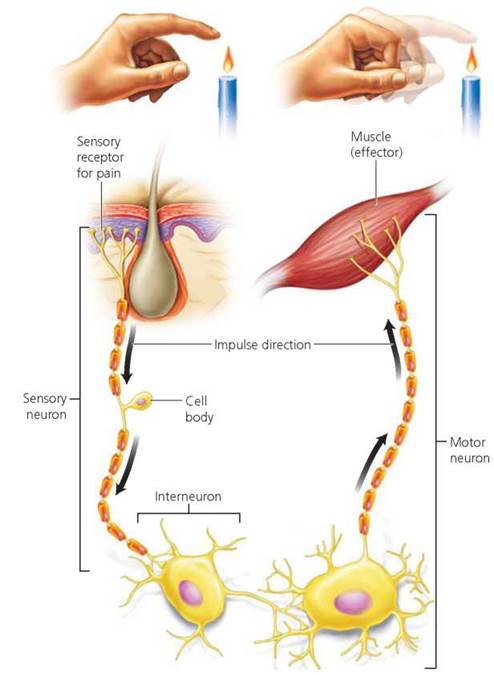Neurons, Neurotransmitters, Nervous Systems (AP Psych)
Where biology and psychology come together (if you couldn’t tell already by the name of the unit).
Neurons
A nerve cell. The basic building block of the nervous system. Connects the central nervous system with muscles, glands, and sensory organs

It is good for AP Psychology students to memorize only the following parts of a neuron:
Cell Body (Soma)
Contains the nucleus and chromosomes, produces energy
Cell membrane
Protects the cell
Dendrites
Receives information from other neurons and sends it to the cell body
Axon (+Nodes of Ranvier)
Carries information to the axon terminal (Nodes of Ranvier are the small gaps of the axon that arent covered by the myelin sheath)
Myelin Sheath
Fatty tissue that makes information travel to the axon terminal quicker
Axon Terminal
Sends the electrical signal to the next neuron
Synaptic Gaps
The junction between the axon tip of the sending neuron and the receiving dendrite
Neurons can be found in the brain and the nervous system
Action Potential
A neural impulse or a brief electrical charge that travels down the axon.

Threshold- the level of stimulation required to trigger a neural impulse
Refractory period- a period of inactivity after a neuron fires
All-or-nothing response- a neuron’s reaction of either firing with full potential or not
There are three main parts/stages to a neuron’s firing:
- Resting potential
- Depolarization
- Repolarization
A neuron will go through 1. then 2. then 3. and finally back to 1.
During depolarization, (you can see in the graph above) neurons gain Na and during repolarization, neurons release K. You should know this but it is unlikely it will be on your test.
Sensory Neurons and Motor Neurons

A sensory neuron is first activated when your sensory receptors feel something. In the example above, it is heat. An impulse will then travel down your sensory neuron, through your interneurons (neurons that connect your sensory and motor neuron, they are located in your brain and spinal cord). The impulse will then travel down your motor neurons after being transferred through your interneurons. Because your motor neurons control your muscles, this impulse will result in you moving. For the example above, it would be to quickly move your finger away from the fire after it burns you.
To summarize: In these neurons, incoming/outgoing information travel likewise:
Sensory Neuron: sensory receptors → brain and spinal cord
Motor Neuron: brain and spinal cord → muscles and glands
Neurotransmitters
chemical messengers that cross synaptic gaps between neurons.
You are required to memorize 7 neurotransmitters in AP Psychology. Here is a memorization technique that helped me with this.
Key terms about neurotransmitters:
Reuptake- a neurotransmitter’s reabsorption by the sending neuron
Endorphins- neurotransmitters linked to pain control and to pleasure
==Agonist-== ==a molecule that increases a neurotransmitter’s action==
==Antagonist-== ==a molecule that blocks/inhibits a neurotransmitter’s action==
Do not get agonist and antagonist mixed up! Here’s a memorization tip: an antagonist in a story is an evil character. Think that blocking or inhibiting a neurotransmitter’s action is bad or evil and link antagonist with blocking/inhibiting.
Endorphins: neurotransmitters linked to pain control and pleasure
Nervous Systems
the body’s speedy, electrochemical communication network, consisting of all nerve cells of the peripheral nervous system and central nervous system

AP Psychology test takers should be familiar with all of these nervous systems, especially the autonomic nervous system’s sympathetic and parasympathetic nervous systems.